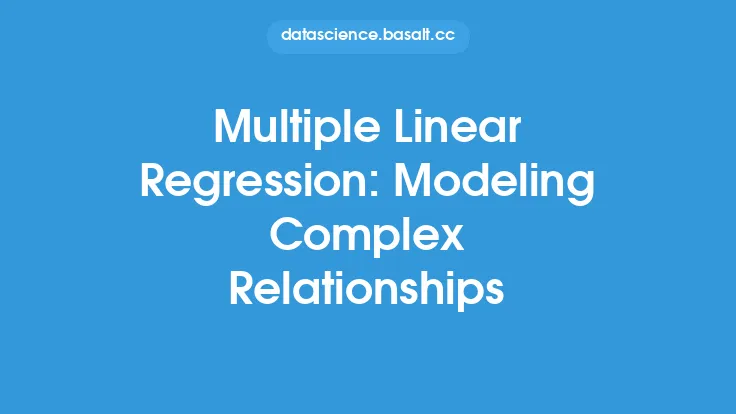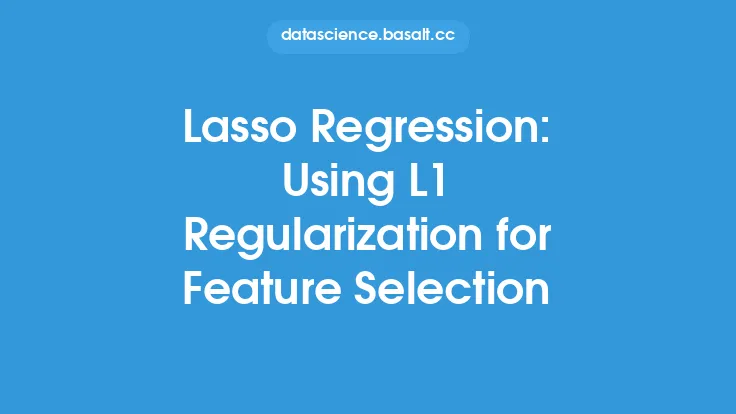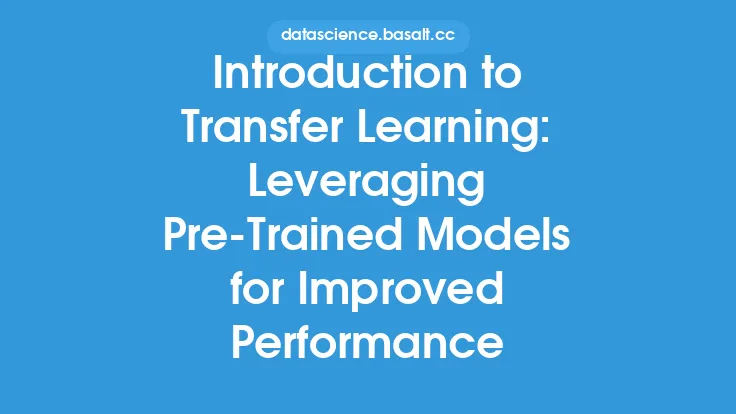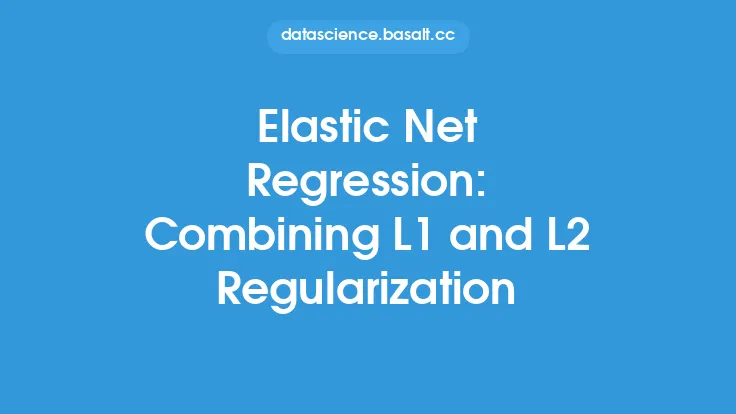Ridge regression is a regularization technique used in regression analysis to improve the accuracy and reliability of models by reducing the impact of multicollinearity and overfitting. This method is an extension of ordinary least squares (OLS) regression, which is commonly used for modeling linear relationships between a dependent variable and one or more independent variables. In OLS regression, the goal is to find the best-fitting line that minimizes the sum of the squared errors between observed responses and predicted responses. However, when the independent variables are highly correlated, OLS regression can produce unstable estimates of the regression coefficients, leading to poor predictive performance.
Introduction to Ridge Regression
Ridge regression addresses the issue of multicollinearity by adding a penalty term to the OLS loss function. This penalty term is proportional to the magnitude of the regression coefficients, which discourages large coefficient values. The ridge regression estimator is given by the formula: β = (X^T X + λI)^-1 X^T y, where β is the vector of regression coefficients, X is the design matrix, y is the vector of responses, λ is the regularization parameter, and I is the identity matrix. The regularization parameter λ controls the amount of shrinkage applied to the regression coefficients. When λ = 0, the ridge regression estimator reduces to the OLS estimator.
How Ridge Regression Works
The key idea behind ridge regression is to reduce the variance of the regression coefficients by introducing a bias term. The bias term is proportional to the regularization parameter λ and is added to the diagonal elements of the X^T X matrix. This has the effect of shrinking the regression coefficients towards zero, which can improve the predictive performance of the model. The amount of shrinkage depends on the value of λ, with larger values resulting in greater shrinkage. Ridge regression can be viewed as a way of stabilizing the regression coefficients by adding a small amount of noise to the diagonal elements of the X^T X matrix.
Choosing the Regularization Parameter
The choice of the regularization parameter λ is critical in ridge regression. A small value of λ will result in little shrinkage, while a large value will result in significant shrinkage. There are several methods for choosing λ, including cross-validation, generalized cross-validation, and the L-curve method. Cross-validation involves splitting the data into training and testing sets, fitting the model to the training set, and evaluating its performance on the testing set. The value of λ that results in the best predictive performance is then selected. Generalized cross-validation is a variation of cross-validation that uses a formula to estimate the predictive error, rather than actually splitting the data into training and testing sets.
Advantages of Ridge Regression
Ridge regression has several advantages over OLS regression. Firstly, it can handle multicollinearity by reducing the impact of correlated independent variables. Secondly, it can improve the predictive performance of the model by reducing overfitting. Thirdly, it can provide more stable estimates of the regression coefficients, which can be useful in situations where the data is noisy or the sample size is small. Finally, ridge regression can be used as a feature selection tool, as the regularization parameter λ can be used to select the most important independent variables.
Disadvantages of Ridge Regression
Despite its advantages, ridge regression also has some disadvantages. Firstly, the choice of the regularization parameter λ can be difficult, and there is no universally accepted method for selecting its value. Secondly, ridge regression can result in biased estimates of the regression coefficients, which can be a problem in situations where the true coefficients are large. Thirdly, ridge regression can be computationally expensive, particularly for large datasets. Finally, ridge regression can be sensitive to the scaling of the independent variables, which can affect the choice of λ and the resulting estimates of the regression coefficients.
Relationship to Other Regularization Techniques
Ridge regression is closely related to other regularization techniques, such as Lasso regression and Elastic Net regression. Lasso regression uses a penalty term that is proportional to the absolute value of the regression coefficients, rather than their squared values. This results in a sparse model, where some of the regression coefficients are set to zero. Elastic Net regression combines the penalty terms of Ridge and Lasso regression, resulting in a model that can handle both multicollinearity and feature selection. Ridge regression can be viewed as a special case of Elastic Net regression, where the Lasso penalty term is set to zero.
Applications of Ridge Regression
Ridge regression has a wide range of applications in statistics and machine learning. It can be used for modeling linear relationships between a dependent variable and one or more independent variables, particularly in situations where the independent variables are highly correlated. It can also be used as a feature selection tool, as the regularization parameter λ can be used to select the most important independent variables. Additionally, ridge regression can be used for modeling non-linear relationships, by using polynomial or spline functions to transform the independent variables.
Implementation of Ridge Regression
Ridge regression can be implemented using a variety of algorithms, including gradient descent and Newton's method. Gradient descent is an iterative algorithm that uses the gradient of the loss function to update the regression coefficients. Newton's method is a more efficient algorithm that uses the Hessian matrix of the loss function to update the regression coefficients. Ridge regression can also be implemented using specialized software packages, such as R or Python, which provide built-in functions for fitting ridge regression models.
Conclusion
Ridge regression is a powerful regularization technique that can be used to improve the accuracy and reliability of regression models. By adding a penalty term to the OLS loss function, ridge regression can reduce the impact of multicollinearity and overfitting, resulting in more stable estimates of the regression coefficients and improved predictive performance. The choice of the regularization parameter λ is critical, and there are several methods for selecting its value, including cross-validation and generalized cross-validation. Ridge regression has a wide range of applications in statistics and machine learning, and can be used for modeling linear and non-linear relationships, as well as for feature selection.





